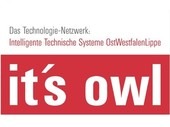Rückspeisestromrichter mit geregeltem Zwischenkreisstrom, Dissertation an der Technischen Universität Braunschweig
Due to increasing requirements regarding the efficiency of electric drives, the use of braking energy has become more and more important in recent years. This thesis introduces a power regeneration converter for standard industrial frequency inverters. The concept focuses on a power range of approximately 5 kW as a standard range prevalent in many electric drives that is still in need of a cost-effective power regeneration system.
The first section demonstrates the energy-saving potential that can be achieved by feeding back braking energy. A representative ratio of absorbed and regenerated energy measured on a rack feeder indicates the practical importance. The next section defines the requirements of a power converter which result from the operation of a standard frequency converter. The analysis and comparison of different circuit topologies from the electrical drive and photovoltaics sector reveals that the concept of an indirect current source inverter is the most suitable. This topology consists of a high frequency buck converter for decoupling the DC link and the mains voltage, a three-phase inverter that switches the regulated current to the phases with the highest instantaneous phase-to-phase voltage, and a capacitive line filter. Thanks to high-frequency switched silicon carbide devices and an optimized iron powder choke, the converter can be built with a high power density and at the same time low costs. Due to the current-source characteristic of the buck converter, special requirements are imposed on the topology of the line-side inverter. This thesis compares concepts with IGBTs, thyristors and RB-IGBTs. An asymmetrical structure of the inverter with thyristors and RB-IGBTs turns out to be particularly suitable. For stable
operation, the current control loop and the synchronization of the mains are of particular importance. Therefore, both control loops are investigated with regard to their behavior under the condition of a non-ideal mains voltage.
The last section of this thesis validates the concept. For this purpose, the function of the investigated power regeneration converter is observed in a lifting gear. Measurements show that the use of braking energy can save approximately 15 to 20 % of the total energy consumption.





























































